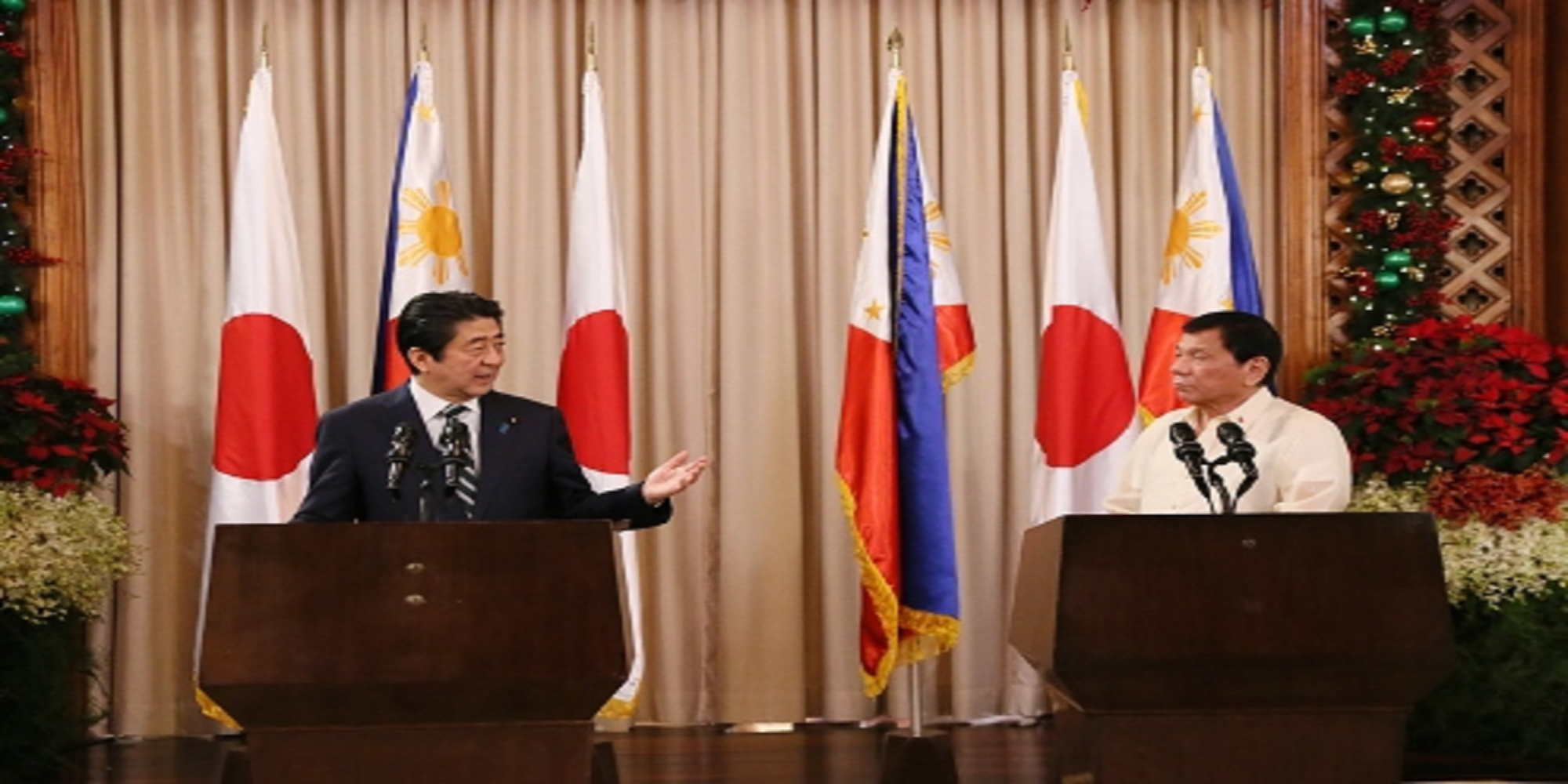Japan - Philippines Strategic Relation

Relations between Japan and Philippines date long back to the Muromachi period of Japanese history, around 1600 A.D., however, during mid-17th century, Japan established an isolationist strategy, and thereby contacts between the two nations were detached until 1854.
Strategic relationship between the two nations has been strong in recent times which bolstered when Japan donated ten ships valued at US$11 million to Philippine Navy in 2013.
The two nations also share a "mutual concern" on China's increasing brazenness in its territorial claims, particularly in the South China Sea. Moreover, in current presidency of Philippine President Rodrigo Duterte, Japan has appeared as the ‘most robust bilateral relationship’ often claimed as “golden age” in their strategic affiliation.
The partnership was initiated on the venerable camaraderie amid the peoples of both states. Being meticulous, after WWII, both countries have effectively erected one of the strongest associations in Asia through the courteousness of the Filipinos and dependable and trustworthy Japanese, including its Official Development Support, culminating in the Strategic Partnership shape of today. This is the result of a 70-year long unrelenting efforts through which peoples of two countries have attained an outstanding achievement in trouncing issues of the past and creating a rock-solid friendship. Manila commends Japan’s consistent trail as a peaceable nation and its input to global opulence.
Looking back to a decade, in 2009, in opposition to the milieu of the global financial crisis and quickly after Philippine legislative accord to free trade agreement with Japan, the strategic partnership was recognized through a joint statement which was further bolstered with a “comprehensive promotion” in 2011. The 2011 move facilitated more provisions on bilateral security collaboration. Moreover, Manila and Tokyo lofted their ties into a “Strengthened Strategic Partnership” through another ‘joint declaration’ and ‘action plan’ that delineated explicit areas of cooperation, including maritime field awareness, information sharing, enhancing capacity among others. In addition, balanced agreements, especially on defense cooperation, and transmit of defense technology were also signed.
Incumbent of Philippine President Rodrigo Duterte has principally persistent his predecessors’ strategy of pursing sturdy ties with Tokyo. Despite transformation of leadership, and obvious policy change, Philippines and Japan majorly have three mutual and intimately connected long-term security interests that will probably prolong to strengthen their strategic partnership in the foreseeable prospect.
Peace and solidarity in the Indo-Asia-Pacific in the prime-most concern for both the countries. China’s meteoric rise, especially in defense sectors and its brazen intentions has produced considerable uncertainties in its surrounding countries with its flourishing economic opportunities. China currently is progressively appearing to be treading a more favorable path towards reshaping the regional power-order. The preponderance of authority by one state in the Indo-Asia-Pacific domain will likely diminish, even extinguish, the autonomy and sovereignty of movement of the adjacent countries and smaller countries, like Japan and Philippines are more vulnerable to it.
In the current era of U.S.-China rivalry, both Manila and Tokyo seek Washington’s continuous rendezvous in the Indo-Asia-Pacific for enhanced regional peace and stability. Both the nations foresee United States as a promoter of equilibrium in the geopolitical power equation as an offshore balancer. Through their strategic enterprise, both countries can endorse capacity-building, as well all training activities, in order to meet the growing challenges of the region.
Moreover, both Manila and Tokyo have overlapping territorial and maritime claims with Beijing in the South China Sea (SCS) and East China Sea (ECS) respectively. Besides sovereign rights issues, the SCS and ECS disagreements also pose serious threat to freedom of navigation and overflight. As archipelagic and maritime states, upholding free and open marine access is critical for security and affluence of both countries. The previous year, the two countries articulated “serious concern on unilateral actions to change the status quo in the [SCS] including large-scale land reclamation and building of outposts.”
Cognizant of Manila’s precarious condition, Tokyo has been assisting Philippines’ maritime security capacity-building efforts. Indeed, Tokyo handed over five Beechcraft TC-90 King Air advanced trainer aircraft, spare parts for Bell UH-1H, ten multirole response vessels etc to Manila, only in terms of their glowing strategic partnership.
In addition, principally because of considered suspicion among the provincial powers, ASEAN is so far the only platform to guide polygonal diplomacy in the Indo-Asia-Pacific. The multilateral centrality of ASEAN is of immense importance to both the countries so as to maintain and contribute in ASEAN-led mechanisms.
The future of Philippines-Japan strategic partnership is not an inevitable finale. There will be challenged with upcoming alterations in domestic and international political equation, as well bureaucratic intricacies. The changing regional security landscape in the past few years further exposed the vulnerabilities of the relationship. However, while intermittent disparities are predictable, long-term forward trajectory of the Philippines-Japan relationship should trend upward.
Being a small power, Philippines necessitate an intention and undemonstrative appraisal of its strategic milieu to develop rational route of action leading to optimal results of its national welfare. While the strategic partnership with Tokyo is a critical bilateral relationship, the accountability of defending and promoting Philippine national interests in an international platform rests with Manila itself. The conclusion and completion of a Status of Visiting Forces Agreement, as well as unremitting engagement between the two nations, are ladders in this route.
Image Credit: Website of the Japan Prime Minister
References:
- https://www.eastasiaforum.org/2016/03/05/turning-over-a-new-leaf-in-japan-philippines-relations/
- https://thediplomat.com/2015/06/japan-philippines-declare-strengthened-strategic-partnership/
- https://www.mofa.go.jp/s_sa/sea2/ph/page4e_000280.html
- https://en.wikipedia.org/wiki/Japan%E2%80%93Philippines_relations
- https://www.worldpoliticsreview.com/articles/23890/can-the-golden-age-of-ties-between-the-philippines-and-japan-last-under-duterte
Comments
- No comments found
Leave your comments